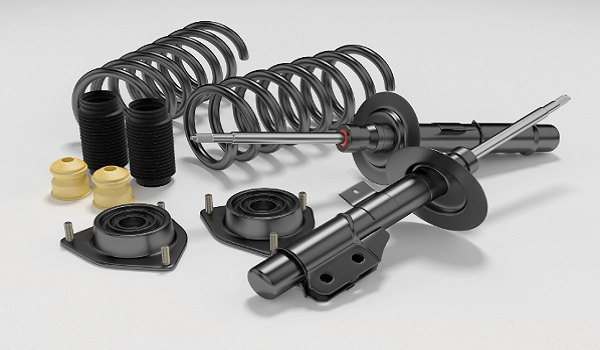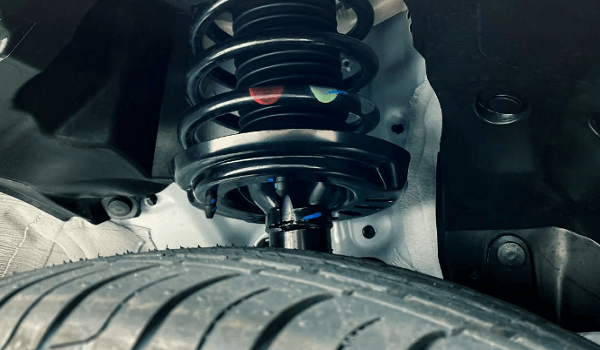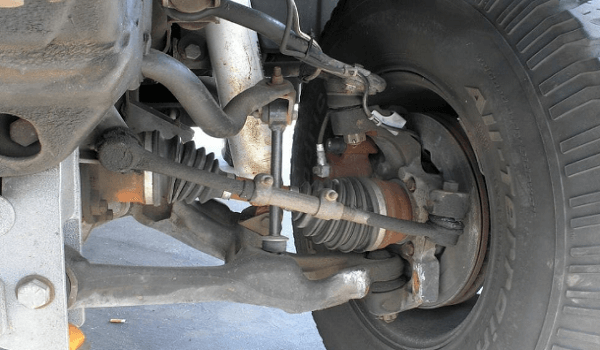How Long Can You Drive With Bad Struts – As a driver, you may have experienced a bumpy ride or noticed some unusual noises coming from your vehicle. One potential culprit could be bad struts.
Struts are an integral part of a vehicle’s suspension system, responsible for absorbing shocks and keeping the tires in contact with the road.
Many drivers may wonder how long they can drive with bad struts before it becomes a safety hazard. In this article, we will explore the impact of bad struts on a vehicle’s performance, safety, and overall lifespan.
What Are Struts?

Struts are a crucial component of a vehicle’s suspension system, consisting of a shock absorber and a spring.
They are responsible for absorbing bumps and impacts, ensuring a smooth ride, and keeping the tires in contact with the road.
Struts play a vital role in the vehicle’s steering and handling, as they help distribute the weight of the car and keep it stable during turns and maneuvers.
Symptoms of Bad Struts

Bad struts can cause a variety of symptoms, which can impact a vehicle’s performance, safety, and overall ride quality. Some common signs of bad struts include:
Bumpy Ride
Bad struts can cause the car to bounce and vibrate excessively, making for an uncomfortable ride.
Noise
If you hear rattling, clunking, or other unusual noises when driving over bumps, it could be a sign of bad struts.
Tire Wear
Bad struts can cause uneven tire wear, leading to premature tire failure and potentially dangerous driving conditions.
Difficulty Steering
If you find it harder to steer your car, especially when making turns, it could be a sign of bad struts.
Dipping or Nose Diving
Bad struts can cause the car to dip or nose dive when braking, reducing the driver’s control over the vehicle.
How Long Can You Drive With Bad Struts?

The answer to this question depends on several factors, including the severity of the damage, driving conditions, and personal preferences.
Generally speaking, it is not recommended to drive with bad struts for an extended period. However, the actual timeframe can vary greatly.
In some cases, bad struts may not immediately impact a vehicle’s safety or performance.
Drivers may be able to continue driving for a few weeks or even months, depending on how frequently they drive and the severity of the damage.
This is not a recommended course of action.
Driving with bad struts can have severe consequences, including reduced braking performance, tire wear, and an increased risk of accidents.
If left unchecked, bad struts can cause additional damage to the suspension system, leading to costly repairs down the line.
Bad struts can impact the vehicle’s handling, making it harder to control in emergency situations. If you encounter unexpected road hazards or need to make a sudden maneuver, bad struts can increase the risk of losing control of the car.
Replacing Bad Struts

The best course of action when dealing with bad struts is to replace them as soon as possible. This not only improves the vehicle’s performance and safety but can also prolong the lifespan of other components in the suspension system.
When replacing struts, it is essential to choose high-quality parts and have them installed by a professional mechanic.
Low-quality parts or improper installation can lead to additional damage and safety concerns.
The cost of replacing struts can vary depending on the make and model of the car and the severity of the damage.
The cost of replacing struts is minimal compared to the potential cost of accidents, injury, or premature wear and tear on other components.
Conclusion
In summary, bad struts can have severe consequences on a vehicle’s performance, safety, and overall lifespan.
While the actual timeframe for driving with bad struts can vary depending on the severity of the damage, it is not recommended to continue driving with bad struts for an extended period.
Symptoms of bad struts can include a bumpy ride, noise, uneven tire wear, difficulty steering, and dipping or nose diving when braking.
If you experience any of these symptoms, it is essential to have your struts inspected by a professional mechanic.
Replacing bad struts is the best course of action, as it can improve the vehicle’s performance and safety, and prolong the lifespan of other components in the suspension system.
It is essential to choose high-quality parts and have them installed by a professional mechanic to ensure proper installation and avoid additional damage.
Bad struts can impact a vehicle’s performance, safety, and overall lifespan. It is recommended to have them replaced as soon as possible to avoid potential accidents, premature wear and tear, and costly repairs.
If you suspect your struts may be damaged, have them inspected by a professional mechanic to ensure the safety and longevity of your vehicle.